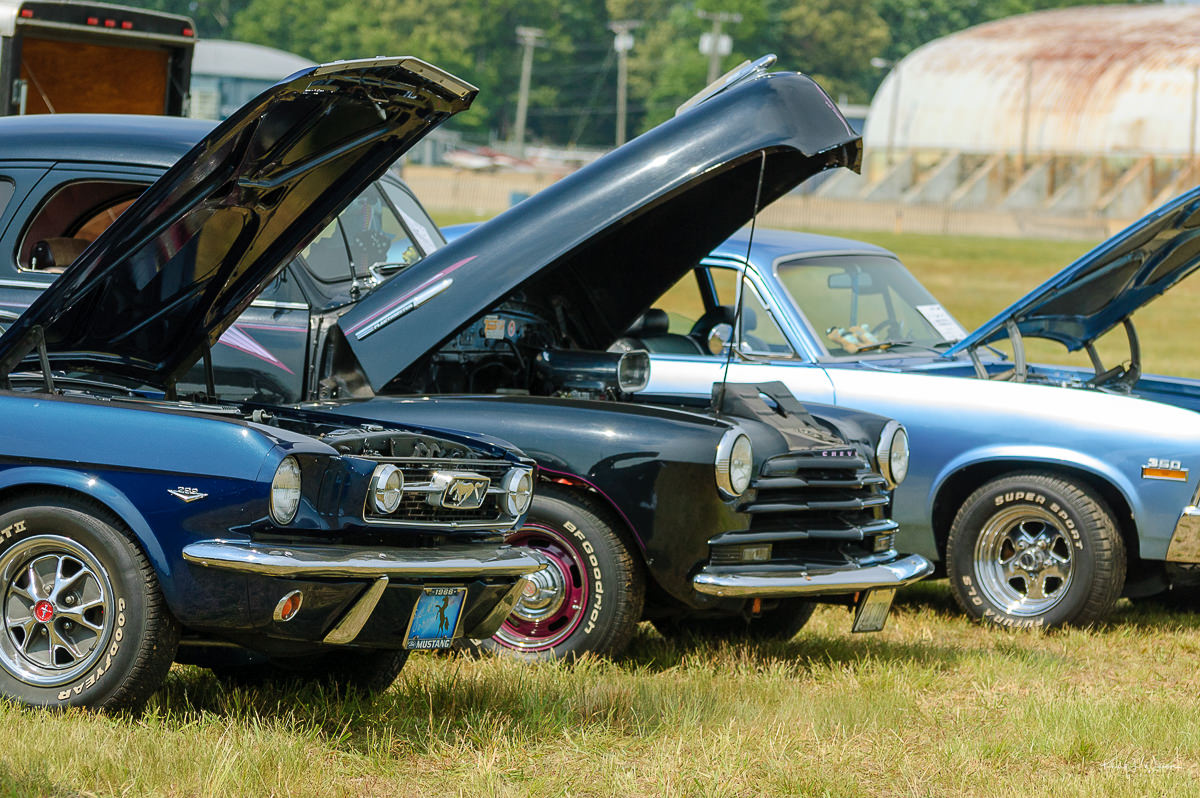
The 1960s represent a truly golden era for automotive enthusiasts, a decade that churned out some of the most iconic vehicles in history. Far more than mere transportation, these machines were vibrant symbols of freedom, innovation, and an unparalleled sense of style. They were not just built for the road; they were crafted to ignite passion and command attention, embodying a bold spirit that continues to resonate with collectors and admirers today.
It is as if these magnificent automobiles are frozen in time, radiating a vintage cool that makes hearts race decades after their initial debut. From the thunderous roar of American muscle to the sleek sophistication of European sports cars, the ’60s delivered a symphony of engineering prowess and artistic design. Every curve, every line, and every rev tells a story of an industry at its zenith, pushing boundaries and setting new benchmarks for performance and aesthetics.
We embark on a journey through this extraordinary period, revisiting the legends that still effortlessly turn heads and spark conversations wherever they appear. Prepare to delve deep into the essence of seven of these unforgettable classics, understanding what made them so revolutionary and why their allure remains undiminished in an age of modern supercars and electric innovations.

1. **1964 Ford Mustang: The Pony Car Revolution Begins**April 17, 1964, marked a pivotal moment in automotive history when Ford unveiled the Mustang, a car that would not only define a new category but also become an enduring symbol of American culture. Its distinctive long hood and short rear deck instantly appealed to a generation seeking sporty looks combined with everyday practicality and an accessible price point. The Mustang struck a perfect balance, offering something truly versatile for every type of driver, from the casual commuter to the performance enthusiast.
The public’s response was nothing short of phenomenal. Dealerships were swarmed by eager buyers, desperate to own this instant icon, turning street corners across America into impromptu car shows as proud new owners displayed their prized possessions. By the close of its very first year, Ford had shattered every sales record in the book, moving over 400,000 units. This unprecedented success firmly launched the “pony car” revolution, forever altering America’s automotive landscape.
More than just a car, the 1964 Ford Mustang embodied freedom and excitement. It wasn’t merely a status symbol; it packed a powerful V8 engine option that cemented its performance credentials. Even today, the iconic silhouette and the unmistakable roar of its engine continue to captivate, making it a true legend on wheels that commands admiration wherever it goes. Its legacy is etched into the very fabric of American automotive heritage, inspiring countless designs that followed.
Over the years, various Mustang models continued to capture the spotlight, with the 1965 Mustang GT350 and the 1967 Shelby GT500 standing out as particularly notable variants. The original Mustang’s enduring appeal lies in its initial concept: a car that was both aspirational and attainable, delivering style, performance, and a slice of the American dream to the masses. It was, and remains, a testament to brilliant marketing and visionary design.
Car Model Information: 2022 Ford Mustang GT Premium
Name: Ford Mustang
Caption: 2018 Ford Mustang GT 5.0
Aka: Ford T5 (Germany)
Manufacturer: Ford Motor Company
Production: March 1964 – present
ModelYears: 1965–present
Class: Unbulleted list
BodyStyle: Unbulleted list
Layout: Front-engine, rear-wheel-drive layout
Categories: 1970s cars, 1980s cars, 1990s cars, 2+2 coupés, 2000s cars
Summary: The Ford Mustang is an American automobile manufactured and marketed by Ford since 1964, as Ford’s longest nameplate in continuous production. Currently in its seventh generation, it is the fifth-best selling Ford car nameplate. The namesake of the “pony car” automobile segment, the Mustang was developed as a highly styled line of sporty coupes and convertibles derived from existing model lines, initially distinguished by its pronounced “long hood, short deck” proportions.
Originally predicted to sell 100,000 vehicles yearly, the 1965 Mustang became the most successful vehicle launch since the 1927 Model A. Introduced on April 17, 1964 (16 days after the Plymouth Barracuda), over 400,000 units were sold in its first year; the one-millionth Mustang was sold within two years of its launch. In August 2018, Ford produced the 10-millionth Mustang; matching the first 1965 Mustang, the vehicle was a 2019 Wimbledon White convertible with a V8 engine.
The success of the Mustang launch led to multiple competitors from other American manufacturers, including the Chevrolet Camaro and Pontiac Firebird (1967), AMC Javelin (1968), and Dodge Challenger (1970). It also competed with the Plymouth Barracuda, which was launched around the same time. The Mustang also had an effect on designs of coupes worldwide, leading to the marketing of the Toyota Celica and Ford Capri in the United States (the latter, by Lincoln-Mercury). The Mercury Cougar was launched in 1967 as a unique-bodied higher-trim alternative to the Mustang; during the 1970s, it included more features and was marketed as a personal luxury car.
From 1965 until 2004, the Mustang shared chassis commonality with other Ford model lines, staying rear-wheel-drive throughout its production. From 1965 to 1973, the Mustang was derived from the 1960 Ford Falcon compact. From 1974 until 1978, the Mustang (denoted Mustang II) was a longer-wheelbase version of the Ford Pinto. From 1979 until 2004, the Mustang shared its Fox platform chassis with 14 other Ford vehicles (becoming the final one to use the Fox architecture). Since 2005, the Mustang has used the D2C platform, unique to the Mustang.
Through its production, multiple nameplates have been associated with the Ford Mustang series, including GT, Mach 1, Boss 302/429, Cobra (separate from Shelby Cobra), and Bullitt, along with “5.0” fender badging (denoting 4.9 L OHV or 5.0 L DOHC V8 engines).
Get more information about: Ford Mustang
Buying a high-performing used car >>>
Brand: Ford Model: Mustang
Price: $38,956 Mileage: 21,117 mi.

2. **1963 Chevrolet Corvette Sting Ray: A Design Masterpiece**The 1963 Chevrolet Corvette Sting Ray stands as another monumental icon of American automotive engineering, revered for its revolutionary design and potent performance. Introduced with a radical split rear window and an aerodynamic shape, it was an instant marvel that pushed the boundaries of sports car aesthetics. Chief designer Bill Mitchell famously drew inspiration from a mako shark he had caught, imbuing the car with an aggressive, fluid form that looked incredibly fast even when stationary.
This Corvette was much more than just stunning looks; it possessed the performance to match its formidable appearance. Equipped with powerful engine options, it quickly became the dream car for speed enthusiasts. The Sting Ray name itself still evokes images of sheer elegance fused with raw power, a combination that thrilled drivers and spectators alike. Its innovations, such as independent rear suspension and distinctive hidden headlamps, set it apart from its contemporaries.
A cruise in a 1963 Sting Ray is akin to stepping back into a glamorous era when style and speed were paramount and inseparable. The distinctive split rear window, while only available for that single year, immediately became an instant collector’s item, enhancing its mystique and desirability. This particular design element, though polarizing, remains a defining characteristic that sets the ’63 apart.
The boat-tail rear end further transformed America’s sports car from a casual weekend cruiser into a legitimate, world-class performer capable of competing on an international stage. Every subsequent Corvette model would invariably be measured against this masterpiece of design and engineering, underscoring its profound and lasting impact. Collectors and enthusiasts continue to seek out this model, cementing its status as one of the most desirable classic cars ever produced.
Car Model Information: 2025 Hyundai PALISADE XRT
Name: Chevrolet Corvette (C2)
Caption: 1963 Chevrolet Corvette Sport Coupe
Manufacturer: Chevrolet
Aka: Chevrolet Corvette Sting Ray
Production: August 1962–July 1967
ModelYears: 1963–1967
Platform: Series 0800 (1962-1964),Series 194 (1965-1967)
Chassis: Body-on-frame
Assembly: St. Louis, Missouri
Predecessor: Chevrolet Corvette (C1)
Successor: Chevrolet Corvette (C3)
Class: Sports car
BodyStyle: Convertible (car),coupé
Layout: Front-engine, rear-wheel-drive layout
Engine: {{cvt,327,cuin,L,1,Chevrolet small-block engine (first- and second-generation)#327,V8 engine
Wheelbase: cvt
Length: cvt
Width: cvt
Height: cvt
Weight: cvt
Transmission: manual transmission,manual transmission,Powerglide
Related: Bill Thomas Cheetah
Designer: Larry Shinoda
Categories: 1960s cars, All articles needing additional references, All articles with specifically marked weasel-worded phrases, All articles with unsourced statements, Articles needing additional references from July 2024
Summary: The Chevrolet Corvette (C2) is the second-generation Corvette sports car, produced by the Chevrolet division of General Motors (GM) for the 1963 through 1967 model years.
Get more information about: Chevrolet Corvette (C2)
Buying a high-performing used car >>>
Brand: Chevrolet Model: Corvette Sting Ray
Price: $40,788 Mileage: 5,081 mi.
Read more about: Rev Your Engines: A Gearhead’s Guide to the 14 Most Iconic Classic Cars of All Time

3. **1961 Jaguar E-Type: Enzo Ferrari’s Favorite**The 1961 Jaguar E-Type, a vehicle often celebrated as one of the most beautiful cars ever conceived, made its breathtaking debut. Its impossibly long bonnet, flowing lines, and perfectly proportioned curves captivated car enthusiasts worldwide, making everything else on the road seem instantly outdated. Enzo Ferrari himself reportedly declared it “the most beautiful car ever made,” a testament that speaks volumes about its unparalleled design and engineering excellence.
Beneath that stunning, sculpted exterior lay a powerful engine, providing thrilling performance that perfectly complemented its artistic form. The Series 1 model, with its distinctive covered headlights and a potent 3.8-liter engine, remains particularly cherished by purists. The E-Type was not merely a mode of transport; it was a profound statement piece, a blend of automotive art and precision engineering that set new standards for sports car design and capability.
Driving this magnificent beauty is an experience that is truly hard to match, offering a sublime blend of sophisticated elegance and exhilarating speed. The car’s claimed 150 mph top speed and a sub-7-second sprint to 60 mph were figures that powerfully backed up its stunning aesthetics, solidifying its reputation as a serious performance machine. Its influence was so profound that every British sports car that followed lived within the formidable shadow cast by this masterpiece.
The E-Type’s unveiling at the Geneva Motor Show caused a sensation, instantly establishing Jaguar as a design and engineering powerhouse. Its allure transcended national borders and cultural preferences, making it a globally admired vehicle. Even today, the E-Type continues to evoke a deep sense of admiration and desire, proving that truly exceptional design possesses an eternal quality that defies the passage of time.
Car Model Information: 1971 Jaguar E-Type Restomod
Sp: uk
Name: Jaguar E-Type
Caption: 1961 E-Type Series 1 3.8-Litre, the first production model of this open two-seater
Aka: Jaguar XK-E (North America),Jaguar V-12
Manufacturer: Jaguar Cars
Production: 1961–1974
Class: Sports car
Predecessor: Jaguar XK150
Related: Jaguar D-Type,Jaguar XJ13
Successor: Jaguar XJS
Layout: FMR layout
Assembly: Coventry,England
Designer: Malcolm Sayer
Categories: 1970s cars, 2+2 coupés, All Wikipedia articles written in British English, All articles with dead external links, All articles with specifically marked weasel-worded phrases
Summary: The Jaguar E-Type, or the Jaguar XK-E for the North American market, is a British front mid-engined sports car that was manufactured by Jaguar Cars Ltd from 1961 to 1974. Its sleek appearance, advanced technologies, high performance, and competitive pricing established it as an icon. The E-Type’s claimed 150 miles per hour (240 km/h) top speed, sub-7-second 0 to 60 mph (97 km/h) acceleration, largely unitary body construction, front and rear independent suspension with disc brakes, mounted inboard at the rear, and rack-and-pinion steering spurred industry-wide changes.
The E-Type was based on Jaguar’s D-Type racing car, which had won the 24 Hours of Le Mans for three consecutive years beginning in 1955.
The E-Type employed what was, for the early 1960s, a novel design principle, with a front subframe carrying the engine, front suspension and front bodywork bolted directly to the body tub. No ladder frame chassis, as was common at the time, was needed and as such the first cars weighed only 1,315 kg (2,899 lb).
It is rumored that, on its debut on 15 March 1961, Enzo Ferrari called it “the most beautiful car ever made”, but this statement is not fully confirmed. In 2004, Sports Car International magazine placed the E-Type at number one on their list of Top Sports Cars of the 1960s. In March 2008, the Jaguar E-Type ranked first in The Daily Telegraph’s online list of the world’s “100 most beautiful cars” of all time.
Get more information about: Jaguar E-Type
Buying a high-performing used car >>>
Brand: Jaguar Model: E-Type
Price: $64,900 Mileage: 2,455 mi.
Read more about: The 13 Most Beautiful Sports Cars Ever Designed: A Masterclass in Automotive Art and Engineering

4. **1964 Porsche 911: The Icon of Precision Engineering**The Porsche 911, first introduced in 1964, quickly established itself as a profound symbol of automotive excellence, a status it proudly maintains to this day. Renowned for its distinctive and instantly recognizable design, coupled with its unique rear-engine layout, the 911 has continuously evolved over the decades while resolutely adhering to its original, groundbreaking concept. This commitment to its core identity is a cornerstone of its enduring appeal.
Porsche’s visionary approach with the 911 redefined what a sports car could truly be. The rear-engine configuration, initially regarded as unconventional by many in the industry, ultimately proved to be an ideal setup for achieving exceptional performance on both public roads and demanding racetracks. This engineering ingenuity allowed for a unique driving dynamic that became synonymous with the Porsche brand, offering unparalleled balance and driver engagement.
The distinctive profile of the 911, characterized by its flowing lines and iconic silhouette, combined with the unmistakable sound of its air-cooled flat-six engine, made it instantly recognizable around the globe. This powerful combination of visual and auditory cues solidified its legendary status, ensuring that a 911 could be identified from a distance, even without a clear view of its badge. It became an automotive benchmark, universally respected.
Models such as the 1967 911S, featuring increased power and significantly improved handling characteristics, quickly became favorites among discerning collectors and enthusiasts. The enduring popularity of the Porsche 911 is a powerful testament to the brand’s unwavering commitment to performance, continuous innovation, and a design philosophy that successfully blends timeless aesthetics with cutting-edge engineering. It’s an engineering masterpiece that set a design language Porsche continues to follow, proving its timelessness.
Read more about: Beyond the Commute: 14 Cars That Redefine Driving Fun and Handling Perfection for Enthusiasts

5. **1964 Pontiac GTO: The True Godfather of Muscle**When John DeLorean and his visionary team embarked on the audacious project of stuffing a massive 389 cubic-inch V8 engine into a relatively modest midsize Tempest chassis, they weren’t just creating another performance car; they were birthing an entire automotive category. The 1964 Pontiac GTO is widely credited with igniting the muscle car era, forever changing automotive history and setting a new standard for American performance. It was fast, loud, and unapologetically brash, precisely what young buyers of the time were clamoring for.
With the optional Tri-Power carburetion, the GTO commanded an impressive 348 horsepower, an output more than sufficient to humble larger, more luxurious sedans at any given stoplight. Its external appearance might have seemed unassuming to the casual observer, but beneath the hood resided an engine that promised pure, unadulterated mayhem. If the nascent 1960s muscle car movement had a definitive godfather, it was undeniably the Pontiac GTO, a car that made America sit up and take notice.
Marketing experts of the era shrewdly coined the term “Tiger” for this beast, a moniker that perfectly encapsulated its aggressive nature and formidable power. Street racers quickly learned to show profound respect for the distinctive rumble emanating from its dual exhausts, a sound that signaled serious competition. Automotive journalists, in their scramble to coin new superlatives, found themselves struggling to adequately describe the GTO as it effortlessly demolished quarter-mile records, cementing its legendary status.
Detroit’s automotive giants spent the remainder of the decade in a relentless pursuit, attempting to recapture the groundbreaking magic and profound impact of this trailblazing machine. The GTO’s legacy lives on as a potent symbol of American automotive ingenuity, continuing to be a cherished favorite among collectors and enthusiasts alike. Its influence is undeniable, and even today, the sight and sound of a ’64 GTO rumbling by can make everyone stop and stare, a perfect blend of power and classic class.
Car Model Information: 1966 Pontiac GTO Coupe
Name: Pontiac GTO
Caption: 2005 Pontiac GTO
Manufacturer: Pontiac (automobile),Holden
Class: Mid-size car,Compact car,Mid-size car
Production: 1963–1974,2003–2006
Predecessor: Pontiac Tempest
Layout: Front-engine, rear-wheel-drive layout
ModelYears: 1964-1974 2004-2006
Categories: 1970s cars, 2000s cars, All articles with unsourced statements, Articles with short description, Articles with unsourced statements from October 2008
Summary: The Pontiac GTO is a front-engine, rear-drive, two-door, and four-passenger automobile manufactured and marketed by the Pontiac division of General Motors over four generations from 1963 until 1974 in the United States — with a fifth generation made by GM’s Australian subsidiary, Holden, for the 2004 through 2006 model years.
The first generation of the GTO is credited with popularizing the muscle car market segment in the 1960s. Some consider the Pontiac GTO to have started the trend with all four domestic automakers offering a variety of competing models.
For the 1964 and 1965 model years, the GTO was an optional package on the intermediate-sized Pontiac LeMans. The 1964 GTO vehicle identification number (VIN) started with 22, while the 1965 GTO VIN began with 237. The GTO was designated as a separate Pontiac model from 1966 through 1971 (VIN 242…). It became an optional package again for the 1972 and 1973 intermediate LeMans. For 1974, the GTO was an optional trim package on the compact-sized Ventura.
The GTO model was revived for the 2004 through 2006 model years as a captive import for Pontiac, a left-hand drive version of the Holden Monaro, itself a coupé variant of the Holden Commodore.
Get more information about: Pontiac GTO
Buying a high-performing used car >>>
Brand: Pontiac Model: GTO
Price: $59,991 Mileage: 4,408 mi.
Read more about: The True Kings of the Road: 15 Muscle Cars That Defined an Era

6. **1962 Shelby Cobra: British Chassis, American Heart**The Shelby Cobra emerged as a high-performance sports car that left an indelible mark on the 1960s, masterfully combining raw power with a lightweight design. This automotive legend was the brainchild of the visionary Carroll Shelby, who brilliantly merged refined British chassis engineering from the AC Ace with the formidable power of American Ford V8 engines. The result was an absolutely thrilling driving experience, a car that could outrun virtually anything on the road at the time.
Shelby’s vision was to create a car that epitomized speed and agility, and the AC Cobra was its glorious manifestation. The marriage of a lightweight chassis with powerful American muscle created a machine that was not only blisteringly fast but also remarkably responsive. It was a testament to the idea that sometimes, the simplest, most potent combinations yield the most spectacular results, captivating a generation with its brutal efficiency and stunning capabilities.
Each Cobra featured a hand-formed aluminum body, with every example carrying subtle, unique battle scars from the artisans’ hammers, making no two cars precisely alike. This bespoke craftsmanship added an extra layer of mystique and exclusivity to an already exceptional vehicle. Models such as the 1965 Shelby Cobra 427 are especially celebrated for their sheer speed and timeless, aggressive design, representing the pinnacle of American performance cars during that exhilarating era.
The Cobra’s unparalleled success, both on the demanding race track and on the open road, unequivocally established Carroll Shelby as America’s premier performance guru. His innovative approach and dedication to extracting maximum performance from existing platforms revolutionized the automotive scene. The Cobra remains a cherished favorite among collectors, symbolizing the fusion of diverse engineering philosophies to create a truly legendary and powerful machine.
Read more about: Boomers, Get Ready to Rev! These 12 Iconic ’60s Car Models Still Drive Our Dreams
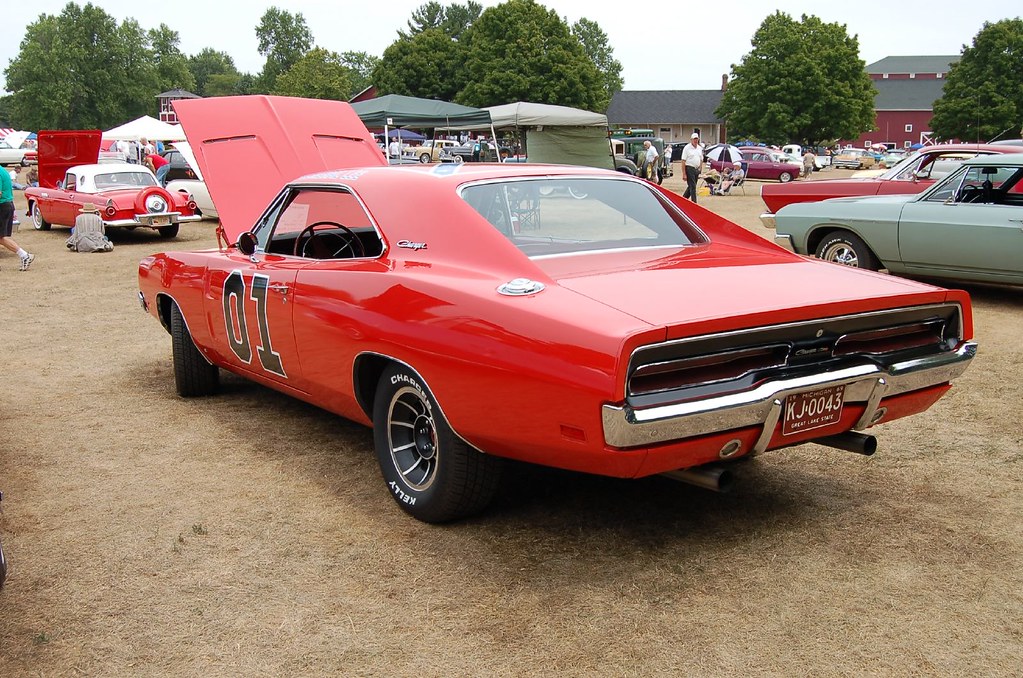
7. **1969 Dodge Charger: The Menacing Muscle Icon**The 1969 Dodge Charger is a muscle car that, without question, screams pure attitude. With its bold, unmistakable design and a roaring engine that promised untamed power, it was unequivocally built to dominate the roads. The Charger wasn’t just a car; it was a powerful statement of American muscle, embodying the audacious spirit of an era defined by high-octane performance and aggressive styling that few could rival.
Its fastback silhouette and recessed grille gave the 1968 Dodge Charger R/T an almost sinister appearance, as if it were perpetually up to no good, which often proved to be the case. This Mopar machine came standard with a formidable 440 Magnum V8, and for those who craved absolute overkill, the legendary 426 HEMI engine was available, transforming it into a true pavement-shredding beast.
The Charger’s presence is utterly unmistakable, making it an enduring favorite in both film and popular culture, most famously immortalized by its roles in “Bullitt” and “The Dukes of Hazzard.” It was menacing, muscular, and beautifully brutal, a trinity of traits that endeared it to a generation. The hidden headlights added a touch of mystery, while its sheer size gave it the intimidating look of a vehicle capable of rolling over lesser cars without breaking stride.
Whether it’s parked, asserting its dominance with a static display of power, or in motion, unleashing its raw capabilities, the Charger demands immediate attention and profound admiration. It unequivocally symbolizes raw power and unbridled freedom, a car for those who lived life in the fast lane. If Darth Vader were to opt for American muscle, it’s not hard to imagine him cruising the Death Star in a Dodge Charger, a machine perfectly encapsulating a dark, powerful allure.
Diving into the diverse legacy of 1960s classics, we uncover a fascinating array of vehicles that left an indelible mark on automotive history. From groundbreaking supercars that redefined performance to luxury grand tourers that exuded sophistication, and from cultural icons that captured the spirit of a generation to purpose-built racing legends, this second half of our journey reveals just how rich and varied the automotive landscape of the sixties truly was. Each of these machines, in its own unique way, continues to captivate and inspire, proving that true greatness never fades. Let’s delve into the next chapter of these unforgettable icons.
Car Model Information: 2023 Dodge Charger SRT Hellcat Widebody Jailbreak
Name: Dodge Charger
Caption: 1969 Dodge Charger
Manufacturer: Dodge
Production: 1966–1978,1981–1987,2005–present
ModelYears: 1966–1978,1982–1987,2006–present
Categories: 1960s cars, 1970s cars, 1980s cars, 2000s cars, 2010s cars
Summary: The Dodge Charger is a model of automobile marketed by Dodge in various forms over eight generations since 1966.
The first Charger was a show car in 1964. A 1965 Charger II concept car resembled the 1966 production version.
In the United States, the Charger nameplate has been used on mid-size cars, personal luxury coupes, subcompact hatchbacks, and full-size sedans.
Get more information about: Dodge Charger
Buying a high-performing used car >>>
Brand: Dodge Model: Charger
Price: $87,558 Mileage: 4,260 mi.
Read more about: Rev Your Engines: A Gearhead’s Guide to the 14 Most Iconic Classic Cars of All Time

8. **1966 Lamborghini Miura: The Mid-Engine Revolution**When the 1966 Lamborghini Miura roared onto the scene, it didn’t just turn heads; it redefined an entire genre. This wasn’t merely another fast car; it was a groundbreaking statement, a declaration that the supercar era had truly arrived. With its revolutionary mid-engine layout, the Miura presented a silhouette unlike anything seen before, a stunning design that looked as if it belonged on a futuristic canvas rather than a public road. Its mere presence was enough to ignite passion and awe in anyone fortunate enough to witness it.
Ferruccio Lamborghini’s vision was to create an experience, not just a mode of transportation, and the Miura was its breathtaking manifestation. The car’s sensuous curves and aggressive stance, combined with its powerful V12 engine positioned directly behind the passenger compartment, immediately set new benchmarks for performance and aesthetic appeal. It was an engineering marvel, a harmonious blend of Italian artistry and raw mechanical prowess that promised an intoxicating blend of speed and style.
Indeed, the Miura wasn’t solely about its blistering speed, though it certainly had that in spades. Its innovative design and the sheer drama of its presentation made it a sensation around the globe. This was a car that dared to be different, pushing the boundaries of what was thought possible for a road-going vehicle. It captivated audiences and inspired a generation of designers and engineers, cementing its place as a pivotal moment in automotive history and establishing Lamborghini as a formidable player in the high-performance car market.
Even today, the 1966 Lamborghini Miura stands as a testament to fearless innovation and timeless beauty. Its legacy is etched into the very fabric of supercar design, influencing countless vehicles that followed. To see a Miura is to witness a piece of history, a car that perfectly encapsulated the thrill and excitement of the 1960s, continuing to thrill and inspire car enthusiasts with its undeniable allure.
Read more about: Gearheads, Start Your Engines! These 12 Vintage Icons Still Define Automotive Perfection
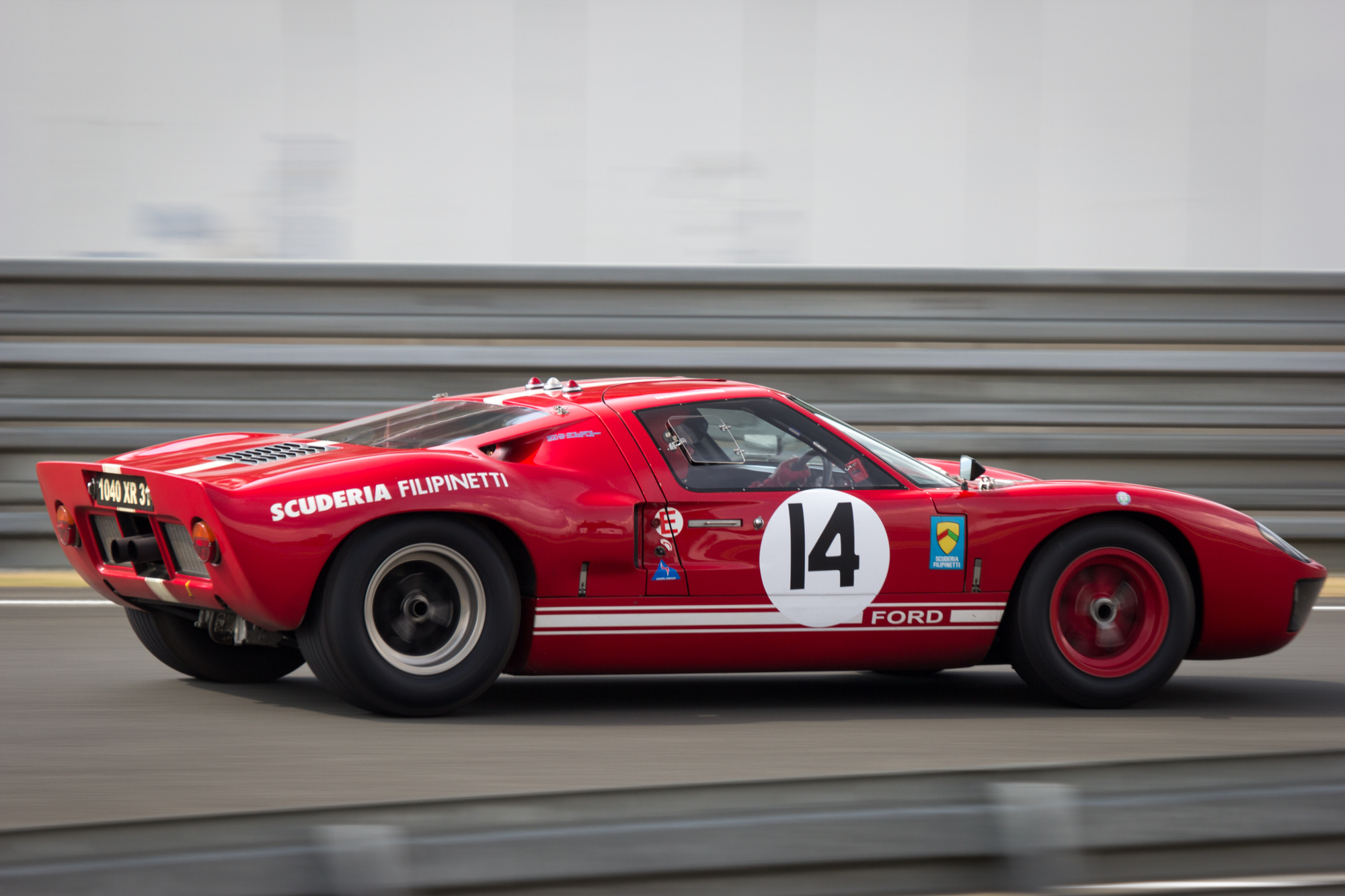
9. **1966 Ford GT40: A Le Mans Legend**The 1966 Ford GT40 isn’t just a car; it’s a saga of ambition, engineering prowess, and an unyielding will to win. Born from a desire to beat Ferrari at its own game, particularly at the grueling 24 Hours of Le Mans, the GT40 emerged as a purpose-built racing legend. Its sleek, low-slung design was a direct consequence of its relentless pursuit of aerodynamic efficiency and speed, creating a form that was as functional as it was breathtakingly beautiful.
This wasn’t merely a vehicle designed for the street; it was a meticulously crafted machine built to conquer the most demanding racetracks in the world. The GT40, with its powerful engine and innovative chassis, embodied American ingenuity and determination on a global stage. Its performance on the racetrack was nothing short of unmatched, a testament to the dedication of the engineers and drivers who pushed it to its limits and beyond, proving that American grit could triumph against formidable European adversaries.
Its historic victories at Le Mans, especially the iconic 1-2-3 finish in 1966, cemented the GT40’s status in the annals of motorsport. These triumphs were more than just races won; they were a powerful statement, symbols of American engineering asserting dominance in a domain long held by European marques. The GT40 became a benchmark, a car synonymous with triumph and the relentless pursuit of excellence, showcasing what could be achieved when innovation met raw power.
Decades may have passed since those glory days, but the Ford GT40’s impact on the automotive world remains as strong as ever. Its legend resonates deeply with enthusiasts, collectors, and anyone who appreciates a story of perseverance and ultimate victory. It’s a car that transcends its era, forever remembered for its incredible speed, stunning design, and the indelible mark it left on the history of endurance racing, a true icon of American spirit.
Car Model Information: 1966 Ford GT40
Name: Ford GT40
Caption: Ford GT40 Mk.I in JWA Gulf Oil racing colors
Manufacturer: Ford Advanced Vehicles,John Wyer,Kar Kraft,Holman-Moody,Shelby American
Production: 1964–1969
Assembly: Slough,Los Angeles
Designer: Ron Bradshaw
Class: Group 4 (racing),Group 5 (racing),Group 6 (racing)
BodyStyle: coupé
Layout: MR layout
Engine: Cubic inch,289 CID (4737 cc) V-8,302 CID (4942 cc) V-8,427 CID (6997 cc) V-8
Transmission: Manual transmission
Wheelbase: 95 in
Abbr: on
Length: 160 in
Width: 70 in
Height: 40.5 in
Weight: convert
Successor: Ford P68
Sp: uk
Categories: 24 Hours of Le Mans race cars, All Wikipedia articles needing clarification, All Wikipedia articles written in British English, All articles needing additional references, All articles that may contain original research
Summary: The Ford GT40 is a high-performance mid-engined racing car originally designed and built for and by the Ford Motor Company to compete in 1960s European endurance racing and the World Sportscar Championship. Its specific impetus was to beat Scuderia Ferrari, which had won the prestigious 24 Hours of Le Mans race for six years running from 1960 to 1965. As rules of the time required that GT cars were built in dozens and sold, around 100 cars in total have been made, mostly as 289 cu in (4.7 L) V8-powered Mk Is, of which at least 50 were made in 1965, which allowed FIA-homologation as Group-4-Sportscar for 1966 until 1971. This gave the old MK.I car of Gulf-Wyer the chance to enter and win Le Mans in 1968 and 1969 after prototypes had been limited to 3 litre, with the performance of the Ford 7-litre-V8 in the factory 1966 Mk.II and 1967 Mk.IV prototypes causing this rule change, which also banned the 4-litre V12 Ferrari 330P4 and others after 1967. The Mk.III designation was used for some road-legal cars.
The Ford GT40 debuted in 1964, and improvements in 1965 led to Ford winning World Championships categories from 1966 to 1968. The first Le Mans win came in 1966 with three 427 cu in (7.0 L) powered Mk.II prototypes crossing the finish line together, the second in 1967 with the same engine now in quite different US-built Mk.IV prototype chassis similar to the “J-car” mule. In order to lower ever-higher race top speeds, a rule change from 1968 onwards limited prototypes to 3.0 litre Formula 1 engines; the sportscar “loophole”, however, allowed the private JW “Gulf Oil” team to win at Le Mans in 1968 and 1969 running a Mk.I with a 5.0 litre engine.
The GT40 effort began in Britain in the early 1960s when Ford Advanced Vehicles began to build the Mk I, based upon the British Lola Mk6, in Slough, UK. After disappointing race results, the engineering team was moved in 1964 to Dearborn, Michigan, US, to design and build cars by its advanced developer, Kar Kraft. All chassis versions were powered by a series of American-built Ford V8 OHV engines modified for racing.
In the 1966 Le Mans, the GT40 Mk II car broke Ferrari’s winning streak, making Ford the first American manufacturer to win a major European race since Jimmy Murphy’s Duesenberg in the 1921 French Grand Prix. In the 1967 Le Mans, the GT40 Mk IV car became the only car developed and assembled entirely (both chassis and engine) in the United States to achieve the overall win at Le Mans.
Get more information about: Ford GT40
Buying a high-performing used car >>>
Brand: Ford Model: GT40
Price: $110,000 Mileage: 13,350 mi.
Read more about: Gearheads, Start Your Engines! These 12 Vintage Icons Still Define Automotive Perfection
_(cropped).jpg/653px-Aston_Martin_DBS_-_Flickr_-_Alexandre_Pr%C3%A9vot_(11)_(cropped).jpg)
10. **1963 Aston Martin DB5: The Quintessential Gentleman’s Car**Few automobiles are as synonymous with luxury, sophistication, and an unmistakable air of cool as the 1963 Aston Martin DB5. It is a car that immediately conjures images of clandestine missions and suave espionage, primarily thanks to its starring role as James Bond’s vehicle of choice in the iconic 1964 film “Goldfinger.” This cinematic association propelled the DB5 to worldwide fame, transforming it from a mere automobile into a cultural phenomenon and a symbol of British elegance and adventure.
Beyond its silver screen celebrity, the DB5 stood on its own as a magnificent piece of engineering and design. Its elegant lines, meticulously crafted bodywork, and powerful 4.0-liter engine made it a standout in the automotive world. The interior was a sanctuary of refined luxury, offering plush comforts and bespoke finishes that appealed to the most discerning buyers. It was a vehicle that offered both exhilarating performance and supreme comfort, a harmonious blend of brute force and refined grace.
Owning and driving an Aston Martin DB5 was, and continues to be, akin to stepping into a world of timeless elegance and thrilling adventure. It represented the pinnacle of grand touring, a car designed for long, spirited journeys in ultimate style. The DB5 wasn’t just about making an entrance; it was about the journey itself, a testament to superior craftsmanship and a driving experience that was both engaging and deeply satisfying. Its allure was, and still is, undeniable, a beacon of automotive excellence.
The DB5 continues to be a highly sought-after collector’s item, celebrated not only for its historical significance and film legacy but also for its enduring elegance and formidable performance. It embodies the charm and allure of the 1960s, representing an era where cars were built with passion, precision, and an unwavering commitment to beauty. The Aston Martin DB5 remains an enduring icon, a symbol of sophisticated power that captivates generations of admirers.
Car Model Information: 2025 Hyundai PALISADE XRT
Name: Aston Martin DB5
Manufacturer: Aston Martin
Production: 1963–1965 (1,059 units),2020 (25 units)
Assembly: Newport Pagnell,England
Designer: Carrozzeria Touring Superleggera
Class: Grand tourer
BodyStyle: coupé
Layout: Front-engine, rear-wheel-drive layout
Engine: DOHC,Straight-6,3995 cc
Order: flip
Abbr: on
Powerout: convert
Transmission: ZF Friedrichshafen
Length: 4570 mm
Width: 1680 mm
Wheelbase: 98.0 in
Predecessor: Aston Martin DB4
Successor: Aston Martin DB6
Doors: 2
Weight: 3311 lb
Sp: uk
Categories: All Wikipedia articles written in British English, Articles with short description, Aston Martin vehicles, CS1: unfit URL, Cars discontinued in 1965
Summary: The Aston Martin DB5 is a British grand tourer (GT) produced by Aston Martin and designed by Italian coachbuilder Carrozzeria Touring Superleggera. Originally produced from 1963 to 1965, the DB5 was an evolution of the final series of DB4. The “DB” designation is from the initials of David Brown who built up the company from 1947 onwards.
The DB5 is best-known for its role in the James Bond films. It was first driven by the fictional spy in the film Goldfinger (1964). In 2013, the car featured on a “British Auto Legends” postage stamp issued by the Royal Mail.
Get more information about: Aston Martin DB5
Buying a high-performing used car >>>
Brand: Aston Martin Model: DB5
Price: $40,788 Mileage: 5,081 mi.
Read more about: Gearheads, Start Your Engines! These 12 Vintage Icons Still Define Automotive Perfection
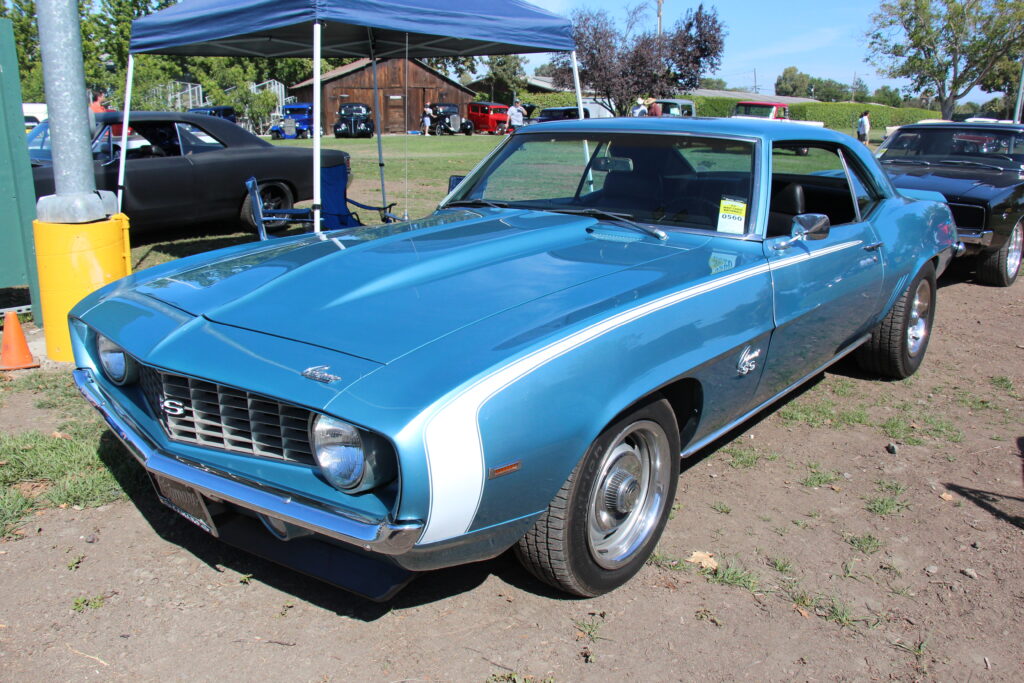
11. **1967 Chevrolet Camaro Z/28: The Street-Legal Track Star**The 1967 Chevrolet Camaro Z/28 burst onto the scene with a high-revving song of small-block dominance, quickly carving out its own niche in the competitive muscle car landscape. While its big-block siblings might have garnered more press for sheer horsepower, the Z/28 was the discerning enthusiast’s choice, a car designed with a laser focus on performance and handling, particularly for SCCA Trans-Am racing. It wasn’t about raw, straight-line speed alone; it was about balance, agility, and the thrill of a car built to win.
Under its hood lay a special 302 cubic-inch V8 engine, an absolute gem that loved to scream past 6,000 RPM, delivering a driving experience unlike any other. This powerplant, combined with a stiffer suspension and its relatively smaller size compared to some of its bulkier rivals, ensured the Z/28 handled with a precision that belied its muscle car brethren. It was a machine engineered not just to be fast, but to be controlled, offering a more nuanced and rewarding drive for those who truly appreciated dynamic capability.
Visually, the 1967 Camaro Z/28 was unmistakably cool, with its iconic coke-bottle shape, optional RS package hideaway headlights, and distinctive racing stripes. These elements made it a poster child for a generation, a symbol of aggressive style and undeniable performance. It was a car that looked fast, sounded fast, and, most importantly, delivered on every promise when pushed to its limits, captivating drivers with its potent blend of aesthetics and engineering prowess.
To purchase a Z/28 was to purchase a commitment to victory, whether on the street or the track. Its legacy endures as a testament to Chevrolet’s ability to create a performance machine that offered more than just brute force. It was a sophisticated beast, a street-legal track star that continues to be highly sought after by collectors and enthusiasts who appreciate its unique blend of power, handling, and timeless American muscle car styling.
Car Model Information: 2025 Hyundai PALISADE XRT
Name: Chevrolet Camaro (fourth generation)
Caption: 1993 Chevrolet Camaro Z28
Manufacturer: Chevrolet
Production: November 1992 – August 27, 2002
ModelYears: 1993–2002
Assembly: Sainte-Thérèse, Quebec
Class: Pony car,Muscle car
BodyStyle: ubl
Platform: GM F platform
Related: ubl
Layout: Front-engine, rear-wheel drive layout
Engine: ubl
Transmission: ubl
Wheelbase: cvt
Length: ubl
Width: cvt
Height: ubl
Weight: cvt
Predecessor: Chevrolet Camaro (third generation)
Successor: Chevrolet Camaro (fifth generation)
Designer: ubl
Categories: 2000s cars, All articles needing additional references, All articles with dead external links, All articles with failed verification, Articles needing additional references from July 2020
Summary: The fourth-generation Chevrolet Camaro, colloquially known as the “Catfish Camaro”, is a pony car that was produced by American automobile manufacturer General Motors for the 1993 through 2002 model years. It was introduced on an updated F-body platform but retained the same characteristic since the first-generation’s introduction back in 1967: two doors, coupe or convertible bodystyles, rear-wheel drive, and a choice of 6-cylinder and V8 engines. The Camaro was revised in 1998 with both exterior and engine changes. General Motors discontinued production of the fourth generation of the Camaro due to slow sales, a deteriorated sports coupé market, and plant overcapacity.
Get more information about: Chevrolet Camaro (fourth generation)
Buying a high-performing used car >>>
Brand: Chevrolet Model: Camaro Z/28
Price: $40,788 Mileage: 5,081 mi.
Read more about: The 11 Rarest Chevrolet Muscle Cars: Unearthing Iconic Powerhouses from the Golden Age to a ’90s Surprise
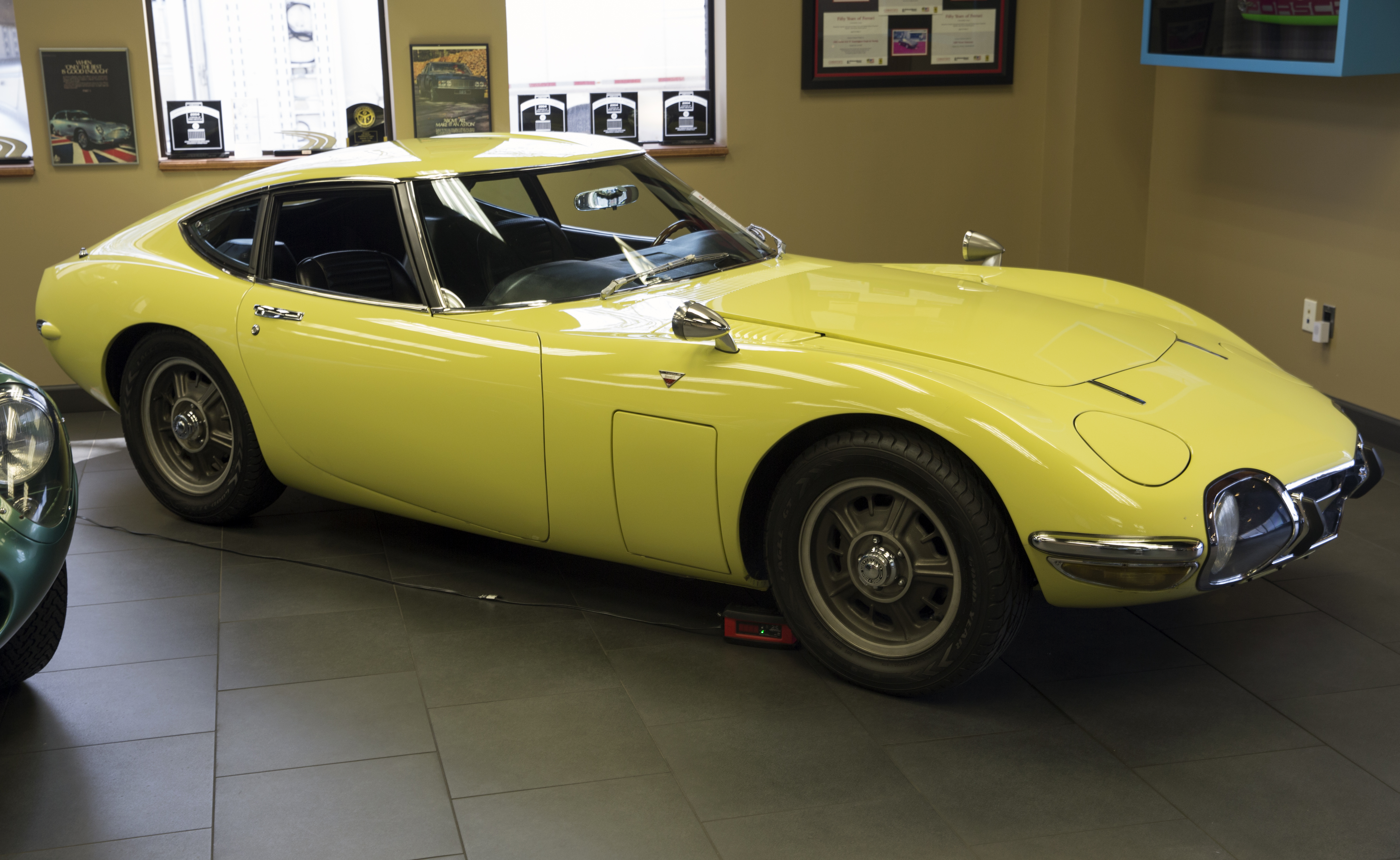
12. **1967 Toyota 2000GT: Redefining Japanese Automotive Design**The 1967 Toyota 2000GT was a revelation, a car that single-handedly redefined perceptions of Japanese automotive design and engineering on the world stage. Before its arrival, Japanese cars were largely known for their practicality and affordability, but the 2000GT shattered those preconceived notions. With its breathtaking sleek lines, impossibly low profile, and exquisite craftsmanship, it instantly established Japan as a serious contender in the realm of high-performance, aesthetically stunning sports cars.
This wasn’t merely a pretty face; beneath its gorgeous exterior lay a powerful engine and impressive engineering that offered a blend of elegance and performance previously unseen from an Asian manufacturer. The 2000GT boasted sophisticated features and dynamic capabilities that allowed it to compete with the best European marques of the era. It was a testament to Toyota’s ambition and commitment to pushing design and technical boundaries, showcasing a meticulous attention to detail that permeated every aspect of its construction.
The 2000GT was a car built for those who appreciated style, sophistication, and groundbreaking performance, appealing to a global audience of discerning enthusiasts. Its rarity, with only a limited number produced, only added to its allure and mystique. It quickly became a coveted item, recognized for its forward-thinking design and its role in elevating the status of Japanese automobiles to an international level, proving that excellence knows no geographic boundaries.
From demanding racetracks to the most exclusive collectors’ garages, the 1967 Toyota 2000GT’s presence remains as powerful today as it was in its prime. It continues to inspire awe and admiration, standing as a pivotal milestone in automotive history. It is a car that symbolizes a blend of elegance, technological sophistication, and a bold vision for the future, forever etched in the hearts of those who cherish classic automotive artistry.

13. **1967 Volkswagen Beetle: The Enduring Cultural Icon**The 1967 Volkswagen Beetle is far more than just a car; it is a true cultural icon, a symbol of an era that championed simplicity, affordability, and a distinctive, friendly charm. Known affectionately as the “people’s car,” its quirky and instantly recognizable design made it a beloved presence on roads across the globe. It became an enduring emblem of the 1960s counterculture movement, representing a departure from the flash and excess of many American models.
What the Beetle lacked in raw speed, it more than made up for in joy and reliability. Its air-cooled engine and straightforward engineering made it incredibly durable and easy to maintain, attributes that contributed significantly to its immense popularity. It wasn’t about conquering drag strips or luxury cruises; it was about the pure, unadulterated pleasure of driving, a car that brought smiles and a sense of carefree adventure to its owners and onlookers alike, fostering a genuine connection with its drivers.
Despite its humble origins, the 1967 Beetle, in particular, is cherished by collectors for its refined design details and unwavering simplicity, showcasing the pinnacle of its original aesthetic. Its charm transcends trends and generations, continuing to captivate new generations of car lovers who appreciate its cheerful presence and unique personality. The Beetle proved that true automotive greatness doesn’t always come with a massive V8 or a hefty price tag; sometimes, it comes in a perfectly rounded, unassuming package.
The Volkswagen Beetle’s legacy is a testament to the power of a universally appealing design and a commitment to practicality. It stands as a timeless classic, a car that continues to evoke nostalgia and affection wherever it appears. Its simple lines and cheerful disposition ensure that the Beetle’s charm will persist for decades to come, forever reminding us that some of the greatest automotive legends are those that truly connect with the people.
Read more about: Beyond the Showroom: Unpacking the Fierce Loyalty of Car Enthusiasts to Their Beloved Brands and Models

14. **1968 Oldsmobile 442: The Gentleman’s Muscle Car**The 1968 Oldsmobile 442 stands out in the boisterous crowd of 1960s muscle cars, offering a distinct blend of power and refinement. This wasn’t merely a blunt instrument designed for quarter-mile assaults; the 442 growled with a certain class, earning its reputation as the “gentleman’s muscle car.” It successfully combined serious performance credentials with a level of interior sophistication and ride quality that often eluded its more spartan competitors, proving that muscle didn’t have to mean compromise.
Originally conceived as a performance package (denoting a 4-barrel carburetor, 4-speed transmission, and dual exhaust), the 442 evolved into a formidable model of its own. It carried a potent 400-cubic-inch V8 engine, delivering ample horsepower and torque to light up the rear tires with a mere touch of the throttle. This formidable powerplant ensured that the 442 could more than hold its own in a straight-line showdown, easily outgunning many of its contemporaries.
What truly set the 442 apart was its commitment to comfort and style. Unlike some of its less subtle cousins, the Oldsmobile 442 offered upgraded interiors, more comfortable seating, and a better-sorted ride quality. This made it a versatile machine: capable of delivering thrilling acceleration on a Saturday night, yet refined enough to cruise to the country club in style. It was the choice for those who appreciated raw power but preferred the finer things in life, a true connoisseur’s muscle car.
To drive a 1968 Oldsmobile 442 was to command a vehicle that effortlessly balanced aggression with elegance. Its powerful presence and distinctive rumble, coupled with its thoughtful amenities, cemented its place as a cherished favorite among collectors and enthusiasts. The 442’s legacy endures as a symbol of sophisticated power, a magnificent machine that proved muscle could indeed be delivered with a touch of class.
Read more about: Burning Rubber and Breaking Hearts: 15 Iconic 1970s Muscle Cars That Still Reign Supreme
As our journey through the legendary automobiles of the 1960s draws to a close, one truth becomes abundantly clear: these weren’t just cars. They were cultural touchstones, engineering marvels, and works of art that ignited passions and left an indelible mark on history. From the primal roar of a muscle car to the elegant sweep of a grand tourer, each machine in this collection represents a unique facet of a truly golden era. They were built for an age of optimism and innovation, reflecting a time when personal expression and automotive excellence went hand-in-hand. Decades later, whether gleaming under the lights of a concours d’elegance, thundering down an open road, or simply gracing the pages of a magazine, these classics continue to capture our imaginations. Their stories are woven into the fabric of our collective automotive consciousness, proving beyond a shadow of a doubt that true legends never rust; they simply grow richer with time, continuing to turn heads and inspire dreams with every passing year. The spirit of the ’60s lives on, powered by these unforgettable machines.



